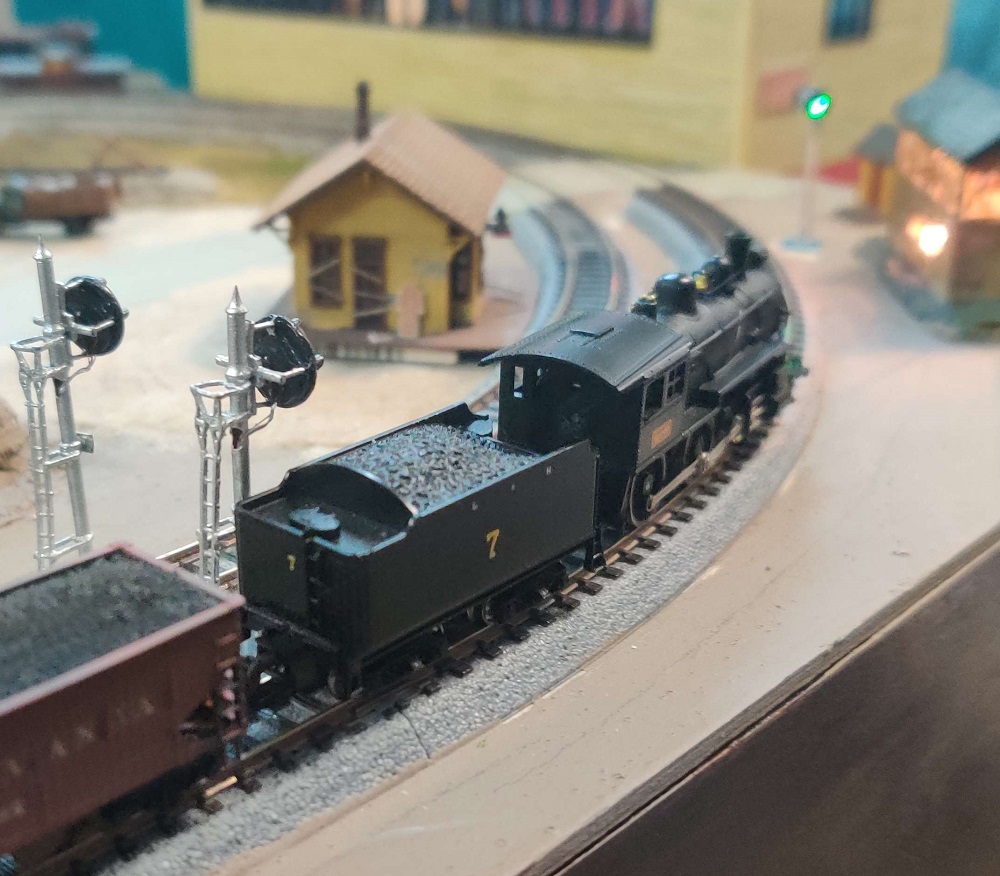On Sheet – Sound Check
On Sheet – Sound Check
 ou know, DCC is a wonderful thing. Now we can drive trains and blink the lights and sound the whistle and bell. I’ve always wondered what those rheostat twisters in the ’50s would have thought of us now with all our digitalized magic. Just the options of not relying on electrical blocks allows us to run helpers and do all sorts of cool things.
ou know, DCC is a wonderful thing. Now we can drive trains and blink the lights and sound the whistle and bell. I’ve always wondered what those rheostat twisters in the ’50s would have thought of us now with all our digitalized magic. Just the options of not relying on electrical blocks allows us to run helpers and do all sorts of cool things.
However, one thing that always bugs me is when, during operations, you see an engineer just driving along, toot-tooting his whistle in patterns only known to him, as cute yet pointless as Thomas the Tank Engine. They use the horns and bell as soundtracks to the movie in their head, without basis or understanding of the reason trains have them (it’s no, you don’t blow a whistle when passing another train as a way to say hello).
Train whistles and horns have a reason, and you can really up your operation game by using them properly. In the list below, I’m omitting the more outlandish cases (such as telling the caboose crew to have the ballast bunnies run out 500 feet with a flag, or calling those same cold, wet, tired individuals back in). No, these are the simple commands that you should use in your next session.
And just so you understand the convention, “—” means a long whistle/horn, and “O” a short one.
— — O — : This is the classic for any road crossings you will come across, two longs, a short and a long. If you are lucky, there will actually be a whistle post telling you where to start blowing (based on expected track speed to the grade crossing). When you hit that last long, you should be just rolling through the crossing so there is a bit of a knack to getting it right.
— — : Two longs mean you are releasing brakes, getting ready to roll. You always hear trains doing this when leaving a station and now you know why. A side note – our local commuter train always buzzes the conductors with two shorts, which is a bastardization of this.
O O O : Use this when backing up, to let your crews know that you are coming back and likely cannot see well over your cut.
O O O O : This is a call for signals, more useful when approaching an interlocking tower or station with a train order signal than anything else.
The bell: If anything, I’ll ring this while passing through a station (to warn those sheepish passengers) and also in yards when moving between cuts of cars (to warn the yard workers).
Now, how do I use these? Well, the crossing sound, always. In fact, we’re getting to the point on the Tuscarora where I will demand that my operators respect my one grade crossing with a horn on approach. Since we also do a lot of switching and run-arounds in this spot, I have a little flag man (and his shanty). You’ll blow to alert him you are coming through, and if you need to work the area, he’ll presumably stand there, flagging the motorists and absolving you from having to blow every time at the crossing.
I also use the starting and backing horn calls when starting out or doing a limited back up move. The jury is out about using this for all your switching moves. People get a little tired of your horn ensemble if you are doing extended switching.
Calling for signals is a Tuscarora favorite. It’s used when the tower operator doesn’t route you quick enough or does not have signals set for your approach.
So yes, on my microlayout, calling for signals will count as a “point” against the leverman, and not blowing for the grade crossing, a point against the engineers. At least, that’s the future plan to make things even more busy and confusing.
But there you go – next time you are at a session, try to blow at the road crossing. You might find that it adds just a little more realism to your run, and is fun as well!
>>>BOOKS FOR SALE DOWN THIS LINK. I’M BEGGING YOU!<<<

Not only is a steam engine cab a busy place, and not only is the crew trying to spot the train order board, but now they’d better be blowing at the upcoming grade crossing in the hazy distance (Photo: Sean M)
